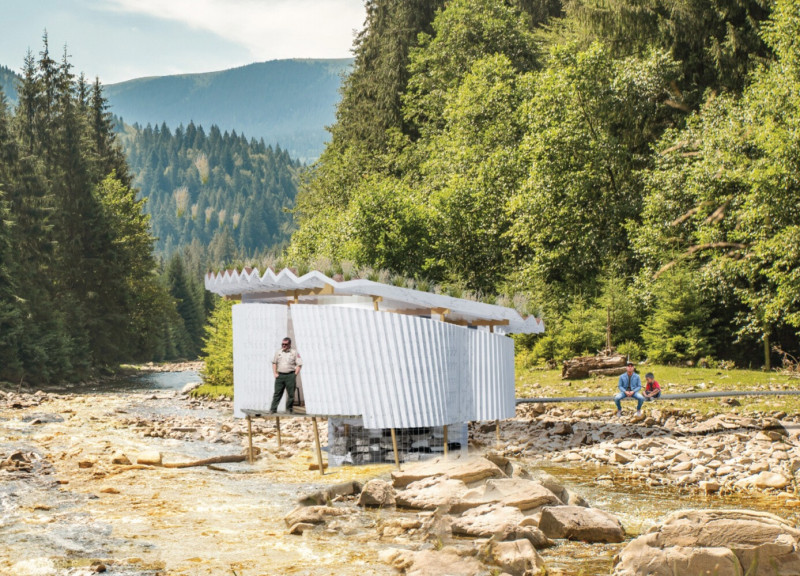5 key facts about this project
The exterior of the building displays a contemporary aesthetic that blends harmoniously with the landscape, characterized by clean lines and carefully chosen materials. The façade combines a panel system of glass and concrete, reflecting a modern sensibility while ensuring durability. The use of large windows optimizes natural light penetration, which not only enhances the interior ambiance but also establishes a transparent connection between the inside and outside. This not only provides scenic views but also engages passersby with the activities occurring within, breaking down the barriers often present in architectural design.
Internally, the layout is designed to accommodate various functions, featuring flexible spaces that can be adapted for different activities. The open floor plan promotes collaboration and interaction, and can easily be rearranged to meet diverse needs, whether for community events, workshops, or exhibitions. This adaptability underscores a modern design ethos that prioritizes multifunctionality, allowing the space to evolve and respond to the community’s requirements.
Key elements such as the central atrium serve as a beacon for gathering, drawing individuals into the building while optimizing circulation. The integration of greenery, through indoor plants and living walls, enhances the air quality and contributes to the overall wellness of the occupants. This biophilic approach not only enriches the aesthetic quality of the internal environment but also reinforces the project’s commitment to sustainability.
Materials play a pivotal role in this design, as they are not only chosen for their aesthetic properties but also for their environmental impact. The project utilizes sustainable resources, including reclaimed wood and low-VOC finishes, contributing to a lower carbon footprint. This careful selection highlights a commitment to ecological responsibility while maintaining a sophisticated finish that appeals to contemporary sensibilities.
Unique design approaches in this project are characterized by the inclusion of passive solar strategies, which harness natural energy to maintain comfortable indoor conditions. By strategically orienting the building and employing overhangs and shading devices, the design maximizes energy efficiency and reduces the reliance on artificial heating and cooling systems. This forward-thinking approach demonstrates how thoughtful architectural design can contribute to sustainability without compromising comfort or usability.
The landscape design surrounding the building further enhances its appeal, with carefully curated outdoor spaces that encourage leisure and social interaction. Pathways lead to seating areas, native plantings, and artistic features that invite users to explore and enjoy the environment. The integration of outdoor elements complements the architectural design, inviting the community to engage in various activities, from casual gatherings to organized events.
In exploring the project presentation, viewers can delve deeper into the architectural plans and sections that detail the project’s structural integrity and functionality. By examining the architectural designs and innovative ideas within this project, one can appreciate the thoughtful balance of aesthetics, usability, and sustainability evident in every aspect of the design. This analysis encourages a closer look at how architecture not only shapes physical spaces but also enhances community life, promoting a sense of belonging. Interested readers are invited to explore the architectural details further and gain a more comprehensive understanding of the project's objectives and outcomes.


























